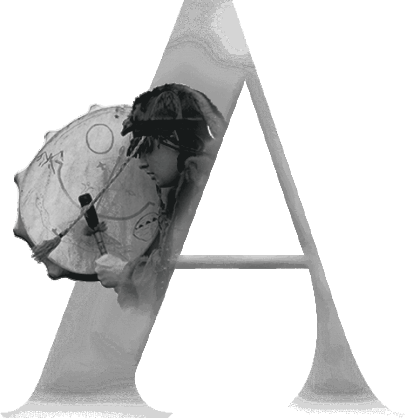The Origins and Practices of Kumalak Divination Among Turkic Peoples
No one can ever tell or describe exactly when the first divinations appeared. Probably with the first fears for our own life or our neighbor. Although, as, it is known from early sources, legends, oral stories, folk epic and traditions of the peoples of the world, that originally there were divinations on animal entrails, on bones, ram's shoulder blade and pebbles.

I'll tell you a little bit about kumalak divination
Among the first mentions of the Kumalaks are information about the Mongol-Tatar invasions, crusader campaigns, apparently it is associated with the conquest of neighboring territories and distant campaigns against other peoples
Most of all mentions about Kumalaks are given in information about proto-Turkic and Turkic peoples. Since the Turkic peoples mainly led a nomadic way of life, they did not need various kinds of cult or ceremonial objects for divination. Therefore, kumalaks in a leather pouch were always with them and did not represent any inconvenience in the hiking life.
This system has different names and variants, but the method of execution is the same and has only minor differences. For example, in Tuvinians, Altaians divination on stones is called "Khuvaanak" In Mongolians "chuluu tatah" (dividing stones), esөn chuluu (nine stones). Kazakhs, Kyrgyz and other Turkic peoples have a similar name "kumalak-taş", "kumalak" from the name of sheep dung, which was used as an instrument of divination. Among Bashkirs, Tatars, including Siberian Tatars, the name "nogyt bulu" (nogyt - beans, bulu - to divide) or "nogyt salu" (salu - to put) is widespread, and as an instrument, instead of stones, large beans were more often used. The method of divination for all the above-mentioned peoples was the same, differing only in tools and accentuation of some stages of the rite. With the adoption of Islam in Muslim Turkic peoples, this rite has undergone significant changes. In this method of divination for non-Muslim peoples is characterized by the energy of the stone, i.e. the power with which the stone was endowed. Therefore, they used for divination stones, which were collected in certain places, the so-called " power places ". These were clear mountain rivers or high mountainous terrain. For Muslims, the cleanliness of the place where the stones were collected was also important, but the stones were not empowered. Some stages of the rite also have differences. If in Tuvinians at the beginning of divination stones are fumigated with herbs, light a fire, then in Tatars before starting divination, they make a ritual reading "taharat", say the intention and read Muslim prayers.
The divination was mainly for the fulfillment of wishes, for the increase of livestock, for a rich harvest, for those who went on a long journey and did not return, and also tried to predict the future.
In the scientific literature well described different variants of divination on stones in different peoples. Based on this, we can conclude that the methodology of the rite was unified. This is the use of three rows of layout and the use of stones in the number of 41 pieces, as well as the semantic meaning of the rows: the upper row of stones has a projection of the head and tells about the abilities, character of a person; the middle row - hands or soul, speaks about the emotions of a person and well-being, the bottom row - legs, is responsible for the movement, position, movement of a person, etc.
Most of all mentions about Kumalaks are given in information about proto-Turkic and Turkic peoples. Since the Turkic peoples mainly led a nomadic way of life, they did not need various kinds of cult or ceremonial objects for divination. Therefore, kumalaks in a leather pouch were always with them and did not represent any inconvenience in the hiking life.
This system has different names and variants, but the method of execution is the same and has only minor differences. For example, in Tuvinians, Altaians divination on stones is called "Khuvaanak" In Mongolians "chuluu tatah" (dividing stones), esөn chuluu (nine stones). Kazakhs, Kyrgyz and other Turkic peoples have a similar name "kumalak-taş", "kumalak" from the name of sheep dung, which was used as an instrument of divination. Among Bashkirs, Tatars, including Siberian Tatars, the name "nogyt bulu" (nogyt - beans, bulu - to divide) or "nogyt salu" (salu - to put) is widespread, and as an instrument, instead of stones, large beans were more often used. The method of divination for all the above-mentioned peoples was the same, differing only in tools and accentuation of some stages of the rite. With the adoption of Islam in Muslim Turkic peoples, this rite has undergone significant changes. In this method of divination for non-Muslim peoples is characterized by the energy of the stone, i.e. the power with which the stone was endowed. Therefore, they used for divination stones, which were collected in certain places, the so-called " power places ". These were clear mountain rivers or high mountainous terrain. For Muslims, the cleanliness of the place where the stones were collected was also important, but the stones were not empowered. Some stages of the rite also have differences. If in Tuvinians at the beginning of divination stones are fumigated with herbs, light a fire, then in Tatars before starting divination, they make a ritual reading "taharat", say the intention and read Muslim prayers.
The divination was mainly for the fulfillment of wishes, for the increase of livestock, for a rich harvest, for those who went on a long journey and did not return, and also tried to predict the future.
In the scientific literature well described different variants of divination on stones in different peoples. Based on this, we can conclude that the methodology of the rite was unified. This is the use of three rows of layout and the use of stones in the number of 41 pieces, as well as the semantic meaning of the rows: the upper row of stones has a projection of the head and tells about the abilities, character of a person; the middle row - hands or soul, speaks about the emotions of a person and well-being, the bottom row - legs, is responsible for the movement, position, movement of a person, etc.
+79221343011 Whatsapp, Viber, Telegram, Signal
info@ahamkara.org
Follow Ahamkara on:
https://ahamkara.teachable.com/ - Online Shamanic School
https://www.facebook.com/ahamkara.eu/notifications... - my Facebook
https://www.instagram.com/ahamkara.eu/ - my Instagram
info@ahamkara.org
Follow Ahamkara on:
https://ahamkara.teachable.com/ - Online Shamanic School
https://www.facebook.com/ahamkara.eu/notifications... - my Facebook
https://www.instagram.com/ahamkara.eu/ - my Instagram
